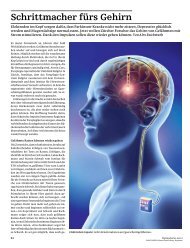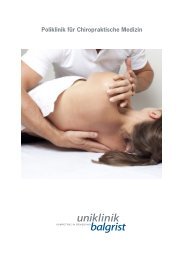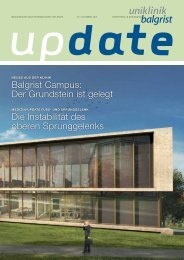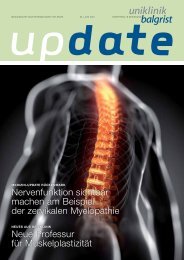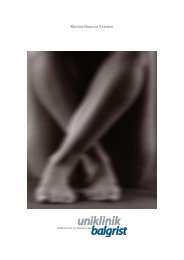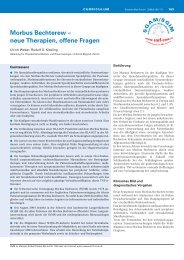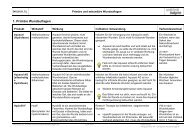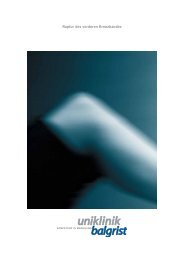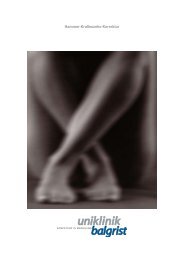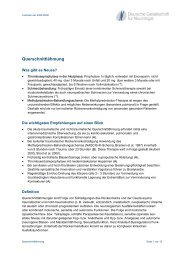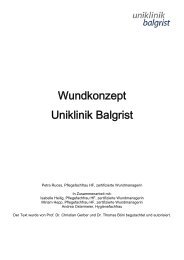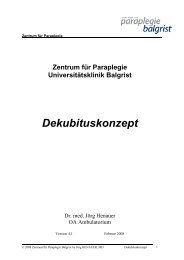Intestinal Rehabilitation 1
Intestinal Rehabilitation 1
Intestinal Rehabilitation 1
You also want an ePaper? Increase the reach of your titles
YUMPU automatically turns print PDFs into web optimized ePapers that Google loves.
Spinal Cord Injury Center<br />
In the absence of the evacuation reflex the mucous membrane and an extensively gentle<br />
manual removal of the sphincter is indicated.<br />
A change in diet to one which is balanced and high in fibre, together with sufficient fluid<br />
intake (2 to up to 3 litres per day), is of great importance for the composition and shape of the<br />
stool (see also information sheet on “Fibre-rich Diet”).<br />
In very special cases of prolonged diarrhoea and incontinence caused by a flaccid anal<br />
sphincter, the use of a dietary supplement has recently proved successful. The product is<br />
Stimulance®, whose practical application is described in detail in Appendix 6.5. In general,<br />
normalisation of stool consistency is achieved with one packet.<br />
5. Auxiliary substances for bowel movement / influence on stool<br />
consistency<br />
Note: Some drugs are usually not part of the comprehensive coverage of health insurance!<br />
For further detailed information on individual effects, side effects, etc. see Appendix.<br />
5.1. Oral laxatives (purgatives for intake):<br />
With regular ingestion a soft, smooth bowel movement should be achieved through the<br />
storage of fluid. To some extent an improvement in peristalsis (bowel movement) can be<br />
expected. The effect of the preparations usually occurs from 12 hours to several days later<br />
(depending on the individual time of passage).<br />
Suitable for daily use are<br />
E.g.: Importal®, Movicol®, fig syrup, etc.<br />
5.2. Rectal laxatives: suppositories and enemas<br />
In principle, there are 3 different types of effects among suppositories:<br />
• Improvement of the lubricity of the stool (e.g. Bulboid®)<br />
• Activation of the strain stimulus, formation of CO2 (e.g. Lecicarbon®)<br />
• Local irritation of the mucous membrane (e.g. Prontolax®)<br />
The suppositories are to be inserted as deeply as possible. An effect can be expected after<br />
approximately 30 to 60 minutes.<br />
A special group of laxatives serves as preparations for use as an enema. Consequently, the<br />
softened stool in the rectum and sigmoid colon empties within 5 to 20 minutes.<br />
E.g.: Microklist®, Clyssie® etc.<br />
© 2003 Paraplegikerzentrum Balgrist, Zürich by Jörg HENAUER MD / Jsabella FREI <strong>Intestinal</strong> <strong>Rehabilitation</strong> Page 7



